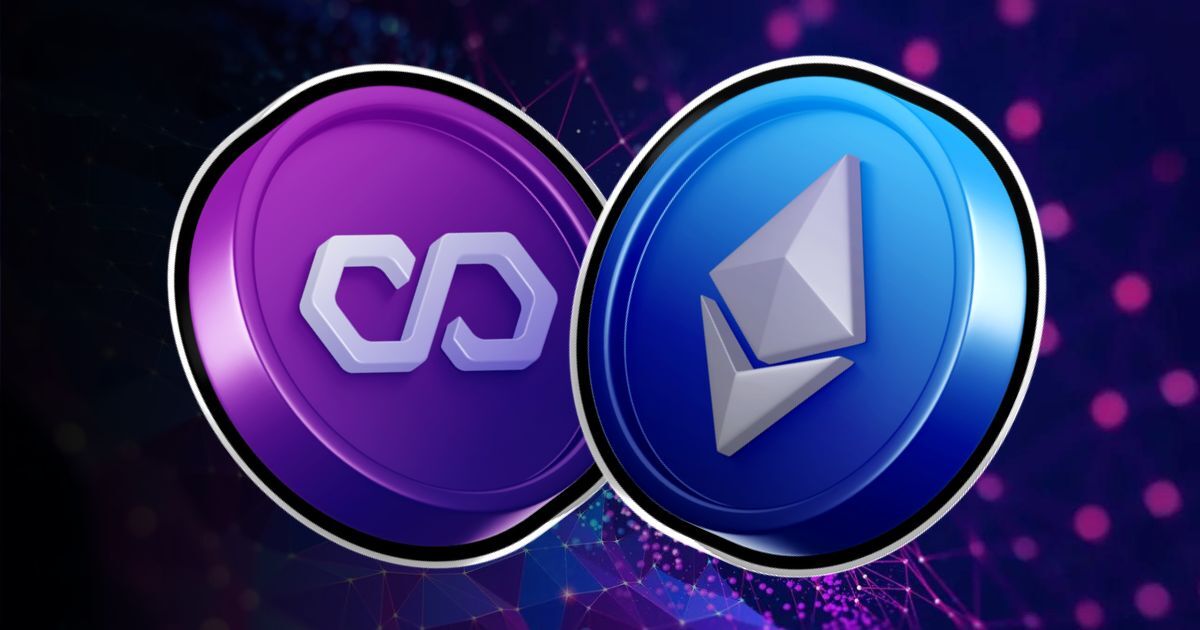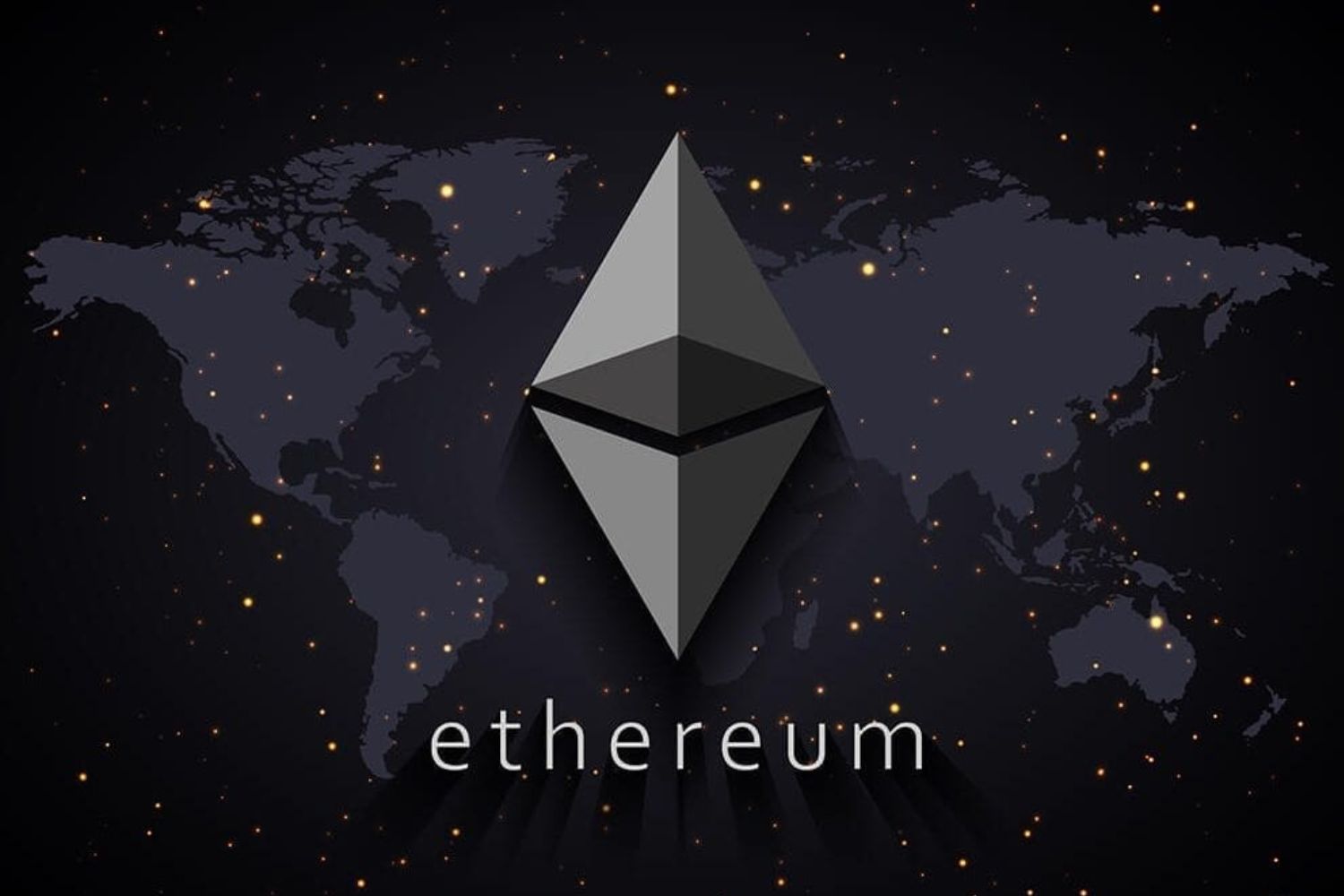Introduction
Welcome to the world of blockchain, a revolutionary technology that has transformed various industries and continues to disrupt traditional systems. Blockchain is a decentralized digital ledger that securely records transactions across multiple computers. Over the years, blockchain has gained popularity and is being used for various applications such as cryptocurrency transactions, supply chain management, voting systems, and more.
As more and more users adopt blockchain technology, an important consideration that arises is scalability. Scaling refers to the ability of a blockchain system to handle a large number of transactions efficiently. While blockchain offers increased security and transparency, the current infrastructure faces limitations when it comes to processing a high volume of transactions at a fast pace.
Blockchain scaling is a crucial topic that aims to address these limitations and enable widespread adoption of blockchain technology. This involves finding innovative solutions to accommodate the growing demand for quick and efficient transactions without compromising the core principles of decentralization and security.
There are several challenges associated with scaling a blockchain network. The first challenge is the size of the blockchain itself. As more transactions occur, the blockchain size increases, making it challenging for every participant to store and validate the entire blockchain. This poses a scalability issue, especially for networks involving millions of users.
Another challenge is the speed of transactions. Traditional blockchains, like Bitcoin and Ethereum, have limited transaction processing speeds. Bitcoin can handle around 7 transactions per second, while Ethereum can process around 15 transactions per second. This pales in comparison to traditional payment networks like Visa, which can handle thousands of transactions per second.
Furthermore, the energy consumption associated with proof-of-work (PoW) consensus algorithms used by many blockchains is also a concern. The computational power required for mining blocks is immense, resulting in high energy consumption and increased transaction costs. This limits the scalability of such networks and raises environmental concerns.
In the quest for solutions, blockchain developers and researchers have explored various approaches for scaling blockchain networks. Off-chain scaling solutions, layer 2 scaling solutions, sharding, sidechains, and consensus algorithm improvements are among the advancements that have been proposed and implemented. These approaches aim to increase transaction throughput, reduce costs, and improve scalability without compromising the core principles of blockchain technology.
What is Blockchain Scaling?
Blockchain scaling refers to the process of improving a blockchain network’s capacity to handle a larger number of transactions or to accommodate a growing user base without sacrificing performance or security. As blockchain technology gains traction and adoption across various industries, the scalability challenge has become evident.
At its core, blockchain is designed to be a decentralized and distributed ledger that allows secure and transparent transactions. However, as more participants join the network and conduct transactions, the system can become overwhelmed, leading to delays, increased fees, and slower transaction times.
Blockchain scaling aims to address these limitations and enable blockchain networks to handle a higher volume of transactions, faster confirmation times, and more efficient operations. By increasing the scalability of the blockchain, more users can participate, and the technology can be used for a broader range of applications.
One of the primary reasons for the scaling challenge is the block size. In traditional blockchain networks, each block has a predefined size limit, typically measured in megabytes. This limitation restricts the number of transactions that can be included in a single block, resulting in slower processing times and longer confirmation times. As the number of users and transactions increases, the block size can quickly become a bottleneck.
In addition to the block size, the consensus algorithm used by a blockchain network also plays a role in its scalability. The most common consensus algorithm, proof-of-work (PoW), requires miners to solve complex mathematical puzzles to validate transactions and add blocks to the blockchain. However, this process is resource-intensive and time-consuming, limiting the number of transactions that can be processed within a given time frame.
To address these challenges, various blockchain scaling solutions have been proposed and implemented. These solutions aim to optimize the underlying infrastructure, improve network efficiency, and increase transaction throughput without compromising the decentralized nature of blockchain technology.
It is important to note that blockchain scaling is an ongoing process, and different solutions may be more suitable for specific use cases and networks. Each solution comes with its own trade-offs, and the implementation of a particular scaling solution depends on the specific requirements and goals of the blockchain network.
By enhancing blockchain scalability, we can unlock the full potential of this groundbreaking technology and enable its widespread adoption across industries. As the demand for blockchain applications continues to grow, finding innovative scaling solutions becomes increasingly crucial to ensure the technology can meet the needs of a global user base.
Challenges with Blockchain Scaling
Blockchain scaling presents several challenges that need to be addressed in order to enable the widespread adoption of blockchain technology. While blockchain offers many advantages, such as decentralization and transparency, its scalability limitations can hinder its efficiency and effectiveness.
One of the primary challenges is the increasing size of the blockchain itself. As more transactions are added to the blockchain, its size grows exponentially. This creates a scalability issue for participants in the network, as storing and validating the entire blockchain becomes resource-intensive and time-consuming. The larger the blockchain, the more difficult it becomes to synchronize and maintain consensus among all nodes.
Another challenge is the speed of transactions. Traditional blockchain networks, like Bitcoin and Ethereum, have a limited transaction processing capacity. Bitcoin can handle around 7 transactions per second, while Ethereum can process around 15 transactions per second. This is significantly lower than the transaction processing capabilities of centralized payment networks like Visa, which can handle thousands of transactions per second.
Furthermore, the energy consumption associated with the proof-of-work (PoW) consensus algorithm used by many blockchains is also a concern. PoW requires miners to compete to solve complex mathematical puzzles in order to add new blocks to the blockchain. This process requires significant computational power and energy consumption, resulting in high transaction costs and environmental issues.
In addition to these challenges, blockchain scaling must also consider the issue of security. As a blockchain network scales and attracts more users, the risk of a 51% attack, where a malicious actor gains control of the majority of the network’s computing power, becomes more significant. Ensuring the security and integrity of the blockchain becomes increasingly crucial as the network expands.
Finally, there is also a need to ensure interoperability and compatibility between different blockchain networks. As various industries and applications adopt blockchain technology, it is essential for different networks to communicate and interact seamlessly. This requires standards and protocols that enable the exchange of data and assets across multiple blockchain platforms.
Addressing these challenges is essential for the wider adoption and utilization of blockchain technology. Overcoming scalability issues, improving transaction speeds, reducing energy consumption, enhancing security measures, and achieving interoperability are key focus areas for blockchain developers and researchers. By finding innovative solutions to these challenges, blockchain can unlock its full potential as a transformative technology in various sectors.
Off-chain Scaling Solutions
Off-chain scaling solutions are approaches that aim to improve the scalability of blockchain networks by moving some transactions off the main blockchain. These solutions leverage additional layers or protocols to facilitate faster and more efficient transaction processing, while still maintaining the security and integrity of the underlying blockchain.
One popular off-chain scaling solution is the implementation of payment channels. Payment channels allow for fast and low-cost transactions between two parties by enabling multiple transactions to be conducted off-chain, with only the final balances being settled on the main blockchain. This significantly reduces the transaction load on the main blockchain and improves the scalability of the network. Examples of payment channels include the Lightning Network for Bitcoin and the Raiden Network for Ethereum.
Another off-chain solution is state channels, which allow for the execution of smart contracts off-chain. State channels enable parties to interact with each other directly, without involving the main blockchain for every transaction. This enables faster and more private smart contract operations. Ethereum’s state channels, known as Raiden, and Bitcoin’s state channel implementation, called the Thunder Network, are notable examples of state channel solutions.
Off-chain scaling solutions also include sidechains, which are independent blockchains that are interoperable with the main blockchain. Sidechains function as separate chains that can handle specific types of transactions or applications, alleviating the burden on the main blockchain. By moving some transactions to sidechains, the main blockchain’s throughput is increased, resulting in improved scalability. Examples of sidechain implementations include Liquid for Bitcoin and the Plasma framework for Ethereum.
Additionally, off-chain scaling solutions can be achieved through the use of trusted intermediaries or consortiums. In these approaches, trusted third parties or consortiums are responsible for validating and settling transactions before they are recorded on the main blockchain. This reduces the transaction load on the main blockchain, enabling faster and more efficient transaction processing. However, it is important to note that this approach sacrifices some decentralization benefits.
Off-chain scaling solutions offer significant advantages in terms of scalability and transaction speed. By moving some transactions off-chain and leveraging additional layers or protocols, blockchain networks can handle a higher volume of transactions with reduced fees and faster confirmation times. However, it is important to carefully consider the trade-offs, such as the level of decentralization and trust required, when implementing off-chain scaling solutions.
Overall, off-chain scaling solutions play a crucial role in addressing the scalability challenges of blockchain networks. By offloading some transactions from the main blockchain and utilizing additional layers, protocols, or sidechains, these solutions improve the overall performance and scalability of blockchain networks, paving the way for broader adoption and utilization of blockchain technology.
Layer 2 Scaling Solutions
Layer 2 scaling solutions are innovative approaches that aim to enhance the scalability of blockchain networks by introducing a secondary layer on top of the main blockchain. These solutions enable faster and more efficient transaction processing, while still maintaining the security and decentralization of the underlying blockchain.
One popular layer 2 scaling solution is known as state channels. State channels enable parties to interact directly with each other off-chain, without involving the main blockchain for every transaction. This allows for faster and cheaper transactions, as only the final state of the channel needs to be settled on the main blockchain. State channels are particularly useful for applications that require frequent interactions between participants, such as gaming or microtransactions.
Another layer 2 solution is the use of sidechains. Sidechains are independent blockchains that are interoperable with the main blockchain. They function as separate chains that can handle specific types of transactions or applications. By moving some transactions to sidechains, the main blockchain’s transaction throughput is increased, improving scalability. Sidechains can be customized to cater to specific needs, such as providing higher transaction speeds or specialized functionalities, without congesting the main blockchain.
Plasma is another layer 2 scaling solution that builds on the concept of sidechains. Plasma is a framework that enables the creation of hierarchical sidechains that are rooted in the main blockchain. Each plasma sidechain can handle a subset of transactions, allowing for greater scalability. Plasma chains operate effectively by periodically committing the aggregated transactions to the main blockchain, thereby reducing congestion and improving performance.
Furthermore, rollups are an emerging layer 2 scaling solution that utilizes smart contracts on the main blockchain to aggregate and verify transactions that occur off-chain. Rollups can significantly increase transaction throughput and reduce costs by bundling multiple off-chain transactions into a single on-chain transaction. This approach allows for faster and more cost-effective transaction processing without compromising the security and decentralization of the blockchain network.
Layer 2 scaling solutions offer significant improvements in scalability and transaction processing speed. By introducing additional layers on top of the main blockchain, these solutions alleviate the congestion and limitations of the blockchain’s base layer, allowing for a higher volume of transactions and improved performance.
It is important to note that the implementation of layer 2 solutions requires careful consideration of trade-offs, such as the level of trust, security, and decentralization. The success of layer 2 scaling solutions also depends on the adoption and support from the blockchain community and stakeholders.
Overall, layer 2 scaling solutions play a critical role in addressing the scalability challenges of blockchain networks. By introducing additional layers or protocols, such as state channels, sidechains, plasma, and rollups, these solutions enable faster and more efficient transaction processing, facilitating the broader adoption and utilization of blockchain technology.
Sharding
Sharding is a technique that aims to improve the scalability of blockchain networks by dividing the workload among multiple nodes or shards. In traditional blockchain networks, every participating node stores and validates the entire blockchain, resulting in resource and processing limitations as the network grows. Sharding solves this problem by partitioning the blockchain into smaller, more manageable shards, each capable of processing a subset of transactions.
With sharding, each shard operates as an independent blockchain, maintaining its own subset of the overall network’s state and transaction history. By dividing the workload and storing only a portion of the data, the individual shards can process transactions in parallel, significantly increasing the network’s overall transaction capacity.
One of the key advantages of sharding is its ability to improve scalability without compromising security or decentralization. Each shard operates with a subset of nodes responsible for validating transactions within that specific shard. This distributed approach ensures that the network remains decentralized, as no single entity or group has control over the entire system.
Sharding also offers benefits in terms of reduced storage requirements. Since each shard stores only a portion of the blockchain’s data, the overall storage requirements for individual nodes decrease. This makes blockchain participation more accessible and efficient for network participants, especially those with limited computational resources or storage capacity.
Implementing sharding in a blockchain network requires careful design and coordination to ensure the seamless coordination of transactions across shards. The network must employ protocols and mechanisms that allow for cross-shard communication and synchronization. This ensures that transactions involving multiple shards can be processed securely and consistently.
While sharding is a promising solution for scaling blockchain networks, it does come with certain challenges. One challenge is maintaining data integrity and consensus across shards. The network must employ robust cross-shard communication and consensus mechanisms to ensure that each shard’s state remains consistent with the rest of the network.
Another challenge is managing shard availability and failure recovery. If a shard goes offline or experiences a failure, the network must have mechanisms in place to handle the failure and ensure that transactions can still be processed efficiently. Additionally, managing shard boundaries and balancing the workload among shards requires careful planning and adjustment to avoid bottlenecks or uneven resource utilization.
Despite these challenges, ongoing research and development in sharding techniques hold great promise for enhancing blockchain scalability. Projects like Ethereum 2.0 are actively working on implementing sharding to improve scalability and address the limitations faced by existing blockchain networks.
Overall, sharding is a groundbreaking technique that enables blockchain networks to handle a higher volume of transactions and improve overall scalability. By dividing the workload among shards, sharding enhances the network’s transaction capacity while maintaining decentralization and security, paving the way for greater adoption and utilization of blockchain technology.
Sidechains
Sidechains are an innovative solution that aims to improve the scalability and functionality of blockchain networks by creating independent chains that are interoperable with the main blockchain. Sidechains operate as separate blockchains that allow for the execution of specific applications or types of transactions, alleviating congestion and increasing the overall capacity of the network.
By moving certain transactions or applications to sidechains, the main blockchain becomes less burdened, resulting in faster transaction processing times and enhanced scalability. Sidechains operate with their own consensus mechanisms, rules, and governance structures, allowing for more flexibility in terms of transaction throughput and functionality.
The interoperability between the main blockchain and sidechains is facilitated by two-way pegging. This mechanism allows for seamless transfer of assets or data between the main blockchain and sidechains, making it possible to utilize the unique features and capabilities of each chain while maintaining trust and security.
One of the key benefits of sidechains is the ability to customize the functionality and rules to cater to specific use cases or applications. For example, a sidechain may be designed to handle high-frequency microtransactions or focus on privacy-enhanced transactions. This customization allows for streamlined and efficient operations that are tailored to the specific requirements of a particular application or user base.
Sidechains also offer an opportunity for experimentation and innovation in the blockchain space. Developers and researchers can create and test new features, consensus mechanisms, or scalability solutions in a sidechain environment without risking the stability or security of the main blockchain. This encourages rapid development and iteration of blockchain technology.
Moreover, sidechains can enable cross-chain interoperability, allowing assets or data to be transferred between different blockchain networks. This opens up possibilities for creating decentralized exchanges, decentralized finance (DeFi) applications, and other complex interactions between multiple blockchain platforms.
However, it is important to note that sidechains do come with certain challenges. Ensuring the security and integrity of sidechains is essential, as any vulnerabilities or compromises in a sidechain can potentially impact the entire network. Mechanisms such as auditing, monitoring, and consensus protocols specific to the sidechains are necessary to address these security concerns.
Additionally, coordinating and maintaining interoperability between the main blockchain and sidechains requires agreed-upon standards and protocols. This ensures compatibility and smooth communication between different chains, enhancing the overall user experience and facilitating widespread adoption.
Despite these challenges, sidechains offer a promising solution to the scalability limitations of blockchain networks. By creating independent chains that can handle specific transactions or applications, sidechains increase the overall capacity of the network while maintaining security and decentralization. With ongoing research and development in this area, sidechains are poised to play a significant role in driving blockchain innovation and adoption.
Consensus Algorithm Improvements
Consensus algorithms are a fundamental component of blockchain networks, responsible for ensuring agreement and validity of transactions across the network. As blockchain technology evolves, improvements in consensus algorithms have become essential for enhancing the scalability and efficiency of blockchain networks.
One prevalent consensus algorithm used in many blockchain networks is proof-of-work (PoW), which requires miners to solve complex mathematical puzzles to validate transactions and add new blocks to the blockchain. However, PoW has limitations in terms of scalability and energy consumption. To address these challenges, alternative consensus algorithms have been developed.
One such algorithm is proof-of-stake (PoS), which selects block validators based on the amount of cryptocurrency they hold and are willing to “stake” as collateral. By eliminating the need for resource-intensive computations, PoS significantly reduces the energy consumption associated with blockchain networks. It also allows for faster block confirmation times and enables a higher transaction throughput, improving scalability.
Another consensus algorithm is delegated proof-of-stake (DPoS), which further enhances scalability by allowing users to vote for a limited number of trusted nodes or delegates who validate transactions and produce blocks. DPoS takes advantage of a smaller set of trusted nodes, reducing the time required to reach a consensus and improving transaction processing speed. This approach offers a more efficient and scalable alternative for blockchain networks.
Additionally, Byzantine fault tolerance (BFT) consensus algorithms have gained popularity for their ability to provide rapid consensus in distributed systems. Algorithms such as Practical Byzantine Fault Tolerance (PBFT) and Federated Byzantine Agreement (FBA) facilitate fast and efficient transaction confirmation by using multiple validators to establish consensus. BFT-based consensus algorithms are particularly useful in enterprise and permissioned blockchain networks that prioritize speed and throughput.
Furthermore, advancements in consensus algorithms include hybrid approaches that combine elements of different algorithms, providing a balance between scalability, security, and decentralization. Hybrid consensus algorithms, such as HoneyBadgerBFT and Casper FFG, aim to achieve the benefits of multiple consensus algorithms, mitigating their individual limitations.
As blockchain technology continues to evolve, ongoing research and development into consensus algorithm improvements are key areas of focus. Novel consensus algorithms, such as proof-of-space-time (PoST) and proof-of-activity (PoA), are also being explored to address scalability, energy efficiency, and security concerns in blockchain networks.
It is worth noting that each consensus algorithm comes with its own trade-offs, and the choice of algorithm depends on the specific requirements and goals of the blockchain network. The selection of a consensus algorithm requires careful consideration of factors such as security, performance, decentralization, and energy efficiency.
Overall, consensus algorithm improvements play a vital role in enhancing the scalability and efficiency of blockchain networks. By exploring and implementing alternative consensus algorithms, blockchain developers and researchers can push the boundaries of what is possible, making blockchain technology more accessible, scalable, and sustainable.
Conclusion
Blockchain scaling is a critical challenge that needs to be addressed to unlock the full potential of blockchain technology. As more users and applications adopt blockchain networks, scalability limitations become evident, leading to slower transaction speeds, increased fees, and resource constraints.
Various solutions have been proposed and implemented to improve blockchain scalability. Off-chain scaling solutions, such as payment channels and state channels, enable faster and more efficient transaction processing by moving some transactions off the main blockchain. Layer 2 scaling solutions, including sidechains and sharding, introduce additional layers or partition the blockchain to increase transaction throughput. Consensus algorithm improvements, such as proof-of-stake (PoS) and delegated proof-of-stake (DPoS), offer alternatives to resource-intensive consensus mechanisms like proof-of-work (PoW).
However, each solution comes with its own trade-offs, and the choice of scaling solution depends on the specific requirements and goals of the blockchain network. It is crucial to strike a balance between scalability, security, decentralization, and energy efficiency when implementing these scaling solutions.
To address the scalability challenge effectively, ongoing research, innovation, and collaboration within the blockchain community are essential. The evolution of consensus algorithms, development of novel scaling techniques, and the exploration of hybrid approaches will continue to drive advancements in blockchain scalability.
Ultimately, the successful implementation and adoption of scaling solutions are crucial for the widespread adoption and utilization of blockchain technology. By addressing scalability limitations, blockchain networks can handle a higher volume of transactions, facilitate faster confirmation times, and support a broad range of applications across various industries.
As blockchain technology continues to evolve, finding innovative scaling solutions becomes increasingly imperative. With the right scalability approaches in place, blockchain has the potential to revolutionize industries, transform economies, and empower individuals around the world.

























